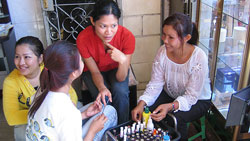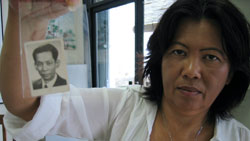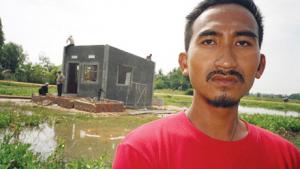In 1977, director and producer Beth Pielert was sitting in a Hebrew school class reading about Anne Frank who perished in the Holocaust and was told never to let something like the Holocaust happen again. But even at just age seven and 13,000 miles away, genocide was happening all over again in Cambodia.Years later Pielert met a former Nuremberg prosecutor who sparked a theme for a film – people who were creators of justice after a great injustice had occurred. After being introduced to one of the founders of the Yale Cambodian Genocide Studies Program at Yale University, Pielert began researching films that had been made about Cambodia and discovered many detailed accounts of the genocide, but none that explored the forgiveness or reconciliation process – this was 1998.
Fast forward to 2006 where the subjects and characters of Pielert’s documentary, OUT OF THE POISON TREE, take us on a journey toward understanding what happened in Cambodia and how people have come to forgive after ‘The Killing Fields.’ It follows Thida Buth Mam, an American survivor of the Khmer Rouge, as she returns to her home country with hopes of unlocking the mystery of her father’s disappearance in 1975. Mam’s quest intersects with many silent voices: widows, survivors from remote villages, monks and even former perpetrators. Her search for the truth stirs up fractured pieces of one family’s nightmare, unearths an unimaginable heartbreak and ultimately shines light on a people’s broken silence. OUT OF THE POISON TREE is even more relevant today as the Khmer Rouge Tribunal proceedings continue on, prosecuting those who committed serious crimes during the 1975-1979 regime.For more information and related classroom activities, download or print the nine-page OUT OF THE POISON TREE Educator’s Guide . The documentary is available on DVD for educational purchase or rental from CAAM Educational Distribution.For other similar films about Cambodia, check out REFUGEE, THE FLUTE PLAYER and MONKEY DANCE.












